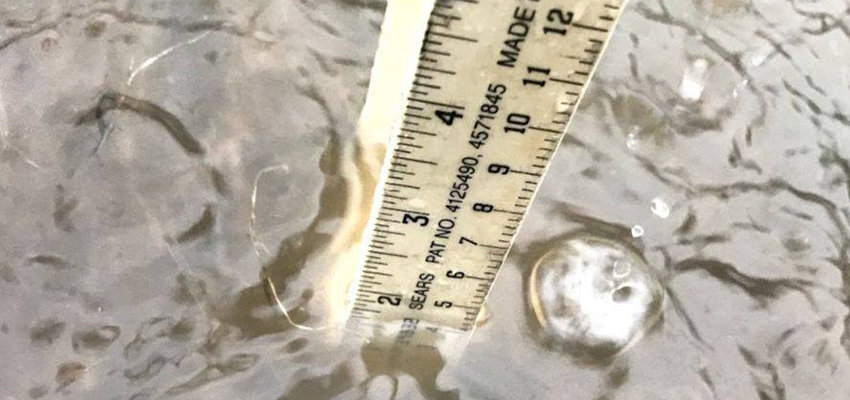Who loved the rain?
Published 1:26 am Tuesday, February 13, 2018

- Biologist Mark Bailey was monitoring the water levels of ephemeral ponds, or temporary pools of water, in the Conecuh National Forest this weekend. Bailey said spots that were dry early in the day Saturday were a foot deep by Sunday afternoon. Courtesy photo
For amphibians, it meant mating season
Although the rainy weekend might have put a damper on things for humans, it was a perfect weekend for amphibians.
One of those being that a certain type of amphibian thrives off of rainy and warm conditions, a Tiger Salamander.
How much rain? Click here for totals
Mark Bailey, a retired biologist from The Nature Conservancy, studies these amphibians.
Bailey has been monitoring the Conecuh National Forest and tracking the amount of water pooling into the areas prime for breeding Tiger Salamanders and other amphibians.
“Without these late winter rains like we’ve just had, the woodland depressions fail to fill up with water, and these are very important to a host of species of frogs and salamanders that breed in them,” Bailey said.
These conditions are called warm, wet, winter weather or WWWW for short, Bailey said.
“These conditions are what herpetologists yearn for, because it’s breeding season for many amphibians in the south,” he said.
“Some of them travel great distances from their summertime home ranges to these breeding sites. “
Bailey said that permanent bodies of water host predatory animals that prey on the tadpoles of the salamanders and frogs.
“Many of our local species cannot successfully breed where fish are present,” he said.
These recent weather conditions increase the activity of the salamanders and frogs.
Specifically, Bailey has been studying Tiger Salamanders.
“Tiger Salamanders and even some frogs spend much of their time underground and (the rain) brings them to surface so they can move overland to the breeding sites,” he said.
If there is no rain, the breeding season would be delayed.
That’s OK, Bailey says.
“Some years it’s so dry the ponds don’t fill at all and animals have to postpone breeding. They tend to live a long time, so a year or even a few with too little water is something they can handle.”
Not only is the rainy season a good thing for the Tiger Salamanders and frogs, it makes an effect on the food chain itself, Bailey said.
“When you think of the thousands and thousands of frog and salamander eggs that are laid into these small ponds, resulting in ‘biomass’ emerging after they have developed is astounding. This drives the food chain in the adjacent uplands,” he said.





